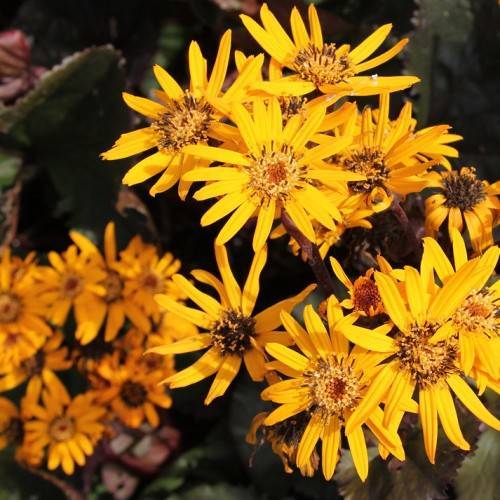
leopard plant
Ligularia 'Britt Marie Crawford'
Cycle:
Herbaceous Perennial
Watering:
Frequent
Hardiness Zone:
4 - 8
Flowers:
Flowers
Sun:
Part shade,full shade
Leaf:
Yes
Growth Rate:
Low
Maintenance:
Moderate
Salt Tolerant:
Yes
Care Level:
Medium
watering
Leopard plant (Ligularia 'Britt Marie Crawford') should be watered plenty once per week, making sure the soil is kept uniformly moist but not soggy. During particularly hot or dry conditions, consider watering twice a week or even more in order to keep the soil moist. Be careful to avoid overwatering, as leopard plants are particularly sensitive to having waterlogged soil. To prevent this, make sure the soil drains quickly after every watering session.
sunlight
Leopard plant (Ligularia 'Britt Marie Crawford') does best with bright, filtered light. Outdoors, the plant should be shaded from direct sun, as too much exposure will cause its large, bright green leaves to yellow and wilt. During the hot summer months, it’s best to keep the plant in a shady spot out of direct sun. However, during cooler months, a few hours of morning sun can be beneficial. When grown indoors, leopard plant should be set near a window but kept out of direct sunlight. A sample light schedule is 6 to 8 hours of indirect bright light per day.
pruning
Leopard plant should be pruned just after flowering in late spring or early summer. This plant should be lightly pruned, removing flower spikes and deadheading the spent blooms. Prune as much of the dead or faded foliage and stems as possible, but be careful not to prune too much, as it can lead to a significant reduction in flower production. If heavy pruning must be done, wait until late summer or early fall. Prune leopard plants to shape and reduce its size, if desired, but again, remember to keep pruning to a minimum.
